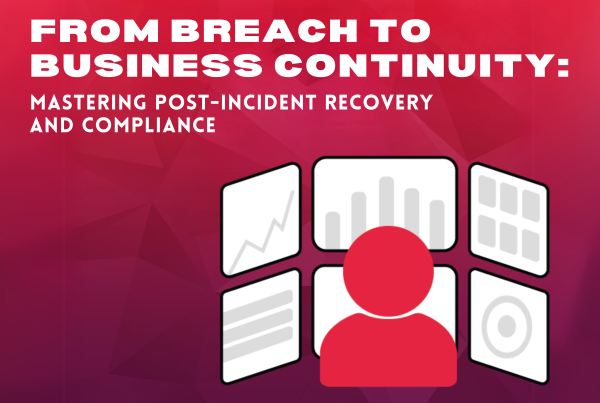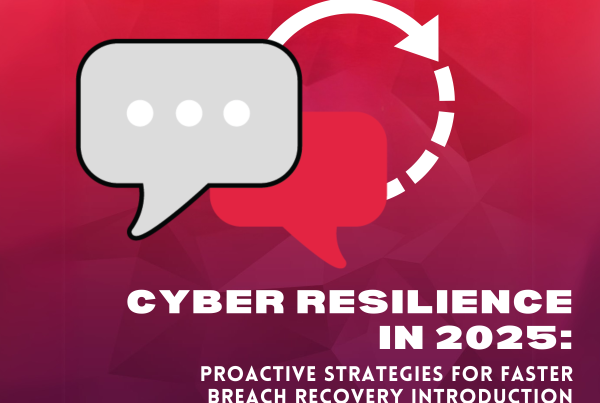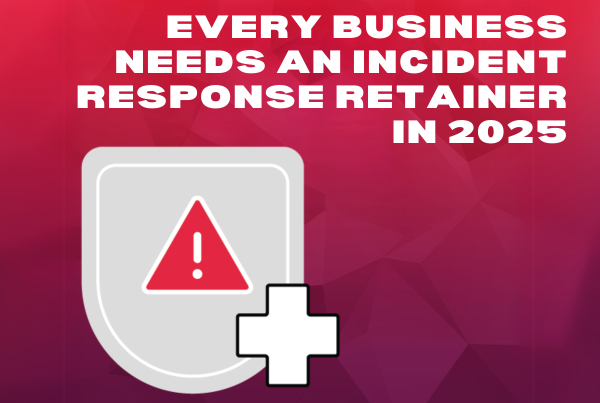Ransomware attacks have become a major cybersecurity concern in recent years, affecting organizations across various industries worldwide. In 2023, high-profile incidents at Taiwan Semiconductor Manufacturing Company (TSMC) and numerous organizations in the Australia and New Zealand (ANZ) region have shed light on the devastating financial and reputational costs associated with such cyber threats. This article explores the consequences of these attacks. It highlights the urgency for organizations to prioritize robust cybersecurity measures in an increasingly digitized world.
The TSMC Breach: Spotlight on Supply Chain Vulnerabilities
In June 2023, Taiwan Semiconductor Manufacturing Company (TSMC), the world’s largest contract chipmaker, fell victim to a data breach caused by the LockBit ransomware gang. TSMC, which holds a commanding 60% share of the global foundry market, had its name listed on the dark web leak site of the Russia-linked gang. The attackers are demanding a staggering $70 million ransom, making it one of the largest ransom demands on record.
TSMC is a supplier to tech giant Apple. The incident disrupted manufacturing processes, delayed product releases, and worsened the company’s reputation for maintaining limiting security standards. Moreover, Apple was dealt substantial financial losses due to halted production, reputational damage, and the costly recovery efforts required to regain control over its supply chain.
LockBit has threatened to publish the stolen data unless TSMC pays the ransom. However, the gang has not provided any evidence to prove their claim. The situation is being closely monitored by cybersecurity experts. William Thomas from Equinix remarked on the never before seen scale of the demand.
The Aftermath of the TSMC Breach
In response to the incident, an anonymous TSMC spokesperson, confirmed that a “cybersecurity incident” happened at one of the company’s IT hardware suppliers, Kinmax Technology. The breach led to the leak of information related to server setup and settings. However, TSMC assured that its business operations and customer information remained unaffected. As a precaution, the company terminated data exchange with Kinmax and followed security protocols and standard operating procedures.
Kinmax Technology, an IT services and consulting organization specializing in various fields, including networking and cloud computing, acknowledged the breach and issued an apology to affected customers. TSMC was not the only partner affected, hinting at a broader reach of the incident. Eric Huang, Vice President of Kinmax Technology, declined to reveal the exact number of affected customers.
TSMC and its partners are now faced with the challenge of addressing the breach, limiting potential fallout, and strengthening their security measures to prevent future incidents.
ANZ Organizations under Siege: A Costly Assault on Multiple Sectors
Throughout 2023, Australia and New Zealand saw an increase in ransomware attacks targeting organizations across various sectors. From healthcare to finance, education to government agencies, the impact was far-reaching. These attacks not only crippled important services but also caused substantial financial burdens on the affected organizations. The costs included ransom payments, incident response, data recovery, and even potential legal penalties. The ANZ incidents highlight the urgent need for improved cybersecurity strategies and collaborative efforts to counter this growing threat.
The aggressive cyber-attacks came to light due to a recent study commissioned by Cohesity, Tenable, and BigID. The study, conducted by Censuswide in late April 2023, reveals that over half of the organizations surveyed in both countries experienced a ransomware attack in the past six months. The findings also point out that 94% of respondents believed the ransomware threat to their industry had increased in 2023 compared to the previous year. Further, 79% expressed concerns about their organization’s ability to combat digital threats.
The State of Cybersecurity Defenses in the AZN
One major aspect of cyber prevention is the ability to recover from cyber-attacks. Shockingly, over 99% of respondents in ANZ admitted that their organizations would require more than 24 hours to recover data and business processes following a cyber-attack. In fact, 80% stated that it would take more than four days. Worse still, almost half of the respondents believed it would take over a week.
Not surprisingly, seven in 10 respondents lacked full confidence in their company’s ability to recover their data and critical business processes in the event of a system-wide cyber-attack. When it comes to the question of paying a ransom, 95% of respondents said their organization would consider it. 78% believed their organization would pay if it meant recovering data and business processes or recovering faster.
Michael Alp, managing director of Cohesity ANZ, stressed the importance of organizations being able to maintain operations without interruptions. He stated, “Organizations cannot afford to be offline and unable to maintain operations, especially for more than a day.” However, the reality is that many organizations are vulnerable to cyber criminals’ demands. They lack the capability to rapidly recover their data and business processes when needed. Less than 5% of respondents stated that their organization would not consider paying a ransom to ensure business continuity. This shows that the majority are willing to pay cyber criminals.
Hurdles in the Face of Ransomware Attacks in the AZN
Recovering from a ransomware attack requires close collaboration between IT and security teams, which is not always the case. Among ANZ respondents, one-third identified the lack of coordination between IT and security as a barrier to recovery. Other challenges mentioned included a lack of timely and detailed alerts (32%) and the absence of a recent, clean, unchanging copy of data (30%).
Regarding data protection, less than half of ANZ respondents felt confident in the security of their data stored on the cloud compared to data stored on-premises. Only one in six respondents believed their on-premises data was decently protected.
The increased threat of ransomware attacks has led to a larger demand for cyber insurance. In fact, 75% of respondents confirmed that their organizations have cyber insurance. However, nearly half of them claimed that it is now more challenging to obtain cyber insurance than it was in 2020.
The Soaring Financial Impact
The financial consequences of ransomware attacks reach far beyond the direct costs involved. Organizations must consider many factors, including operational downtime, lost productivity, reputation damage, legal liabilities, a decrease in customers, and potential regulatory fines. Furthermore, the expenses that come with incident response, cybersecurity enhancements, and staff training to prevent future attacks add to the financial burden. The total costs of these attacks can amount to millions, if not billions, of dollars. It risks the stability and long-term viability of affected businesses.
The Imperative for Proactive Cybersecurity Measures
As ransomware attacks become more sophisticated and widespread, organizations across all sectors must prioritize proactive cybersecurity measures. Investing in robust endpoint protection, network monitoring systems, and timely software updates are important steps in reducing vulnerabilities. Requiring multi-factor authentication, conducting regular security audits, and creating incident response plans can help lessen the impact of potential attacks. Additionally, organizations must prioritize employee training and awareness programs. They increase the human firewall against social engineering tactics frequently used in ransomware attacks.
The high costs suffered by TSMC, ANZ organizations, and Apple in the face of ransomware attacks emphasize the urgent need for organizations to prioritize cybersecurity. Prevention and defense strategies are no longer optional. In reality, these are essential investments to protect valuable assets, maintain operations, and safeguard customer trust.
Conclusion
The devastating cost of ransomware attacks experienced by TSMC and ANZ organizations in 2023 serves as a wake-up call for businesses worldwide. The financial losses, operational disruptions, reputational damage, and regulatory penalties tied with these incidents highlight the costly consequences of inadequate cybersecurity measures. Organizations must proactively invest in robust cybersecurity solutions. They need to recognize that the cost of prevention is less than the potential financial and reputational fallout caused by ransomware attacks. In an increasingly digitized world, protecting data and strengthening defenses is not only a business necessity but a critical responsibility to customers, partners, and stakeholders alike.
About IPV Network
Since 2016, IPV Network has been a trusted partner of leading enterprises in the Philippines. It brings the best-of-breed cybersecurity solutions. IPV network helps businesses identify, protect, detect, respond, and recover from cyber threats. Email us at [email protected] or call (02) 8564 0626 to get your FREE cybersecurity posture assessment!
Sources:
https://www.thestar.com/business/2023/07/04/the-high-cost-of-cyber-attacks-report-finds-most-firms-hit-by-ransomware-pay-up-and-the-price-has-risen-dramatically.html
https://www.techtarget.com/searchsecurity/news/366543219/TSMC-partner-breached-by-LockBit-ransomware-gang
https://www.computerweekly.com/news/366543374/Over-half-of-ANZ-organisations-hit-by-ransomware
https://www.cshub.com/attacks/news/apple-supplier-faces-70-million-ransomware-attack
TSMC confirms data breach after LockBit cyberattack on third-party supplier


